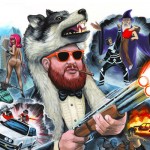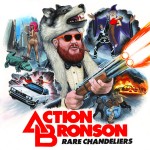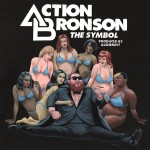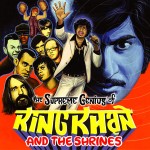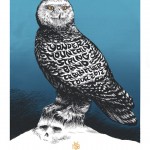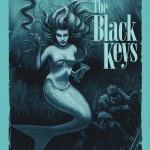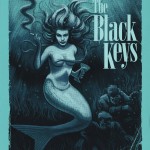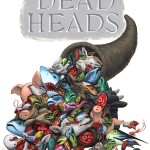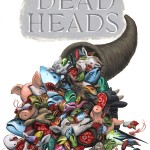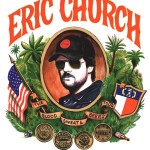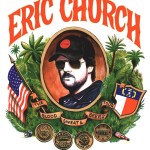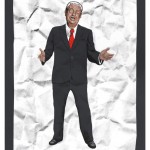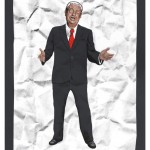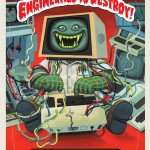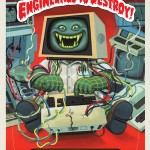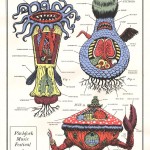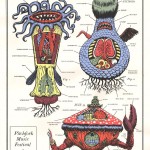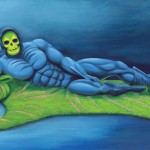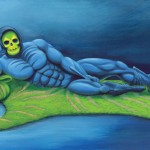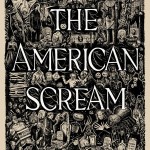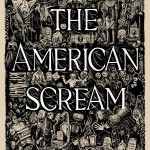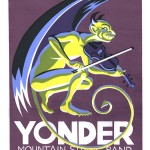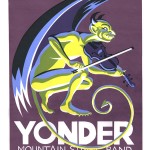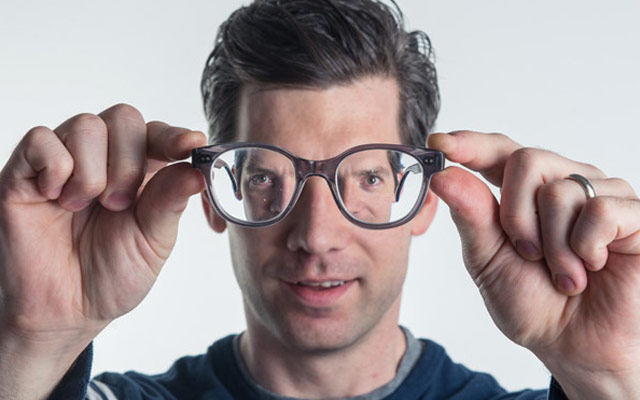If artist Johnny Sampson seems like a bit of a smart-ass, understand that this irreverent point of view has helped him successfully fashion a signature style couched comfortably between MAD Magazine and Starsky and Hutch. If you’re looking for something more introspective, go elsewhere. He’s simply not the serious type. However, considering the release of his most visible work to date (for Action Bronson‘s Rare Chandeliers), Sampson might find himself in the position to be taken very seriously, as his special brand of retro-absurdity has given visual life to one of 2012’s best albums.
Responding from his home in sub-zero Chicago, Johnny discussed with us his past influences, future collaborations, and what it means to be a serious/not-too-serious artist.
How did you end up working with Action Bronson, and how did you approach that project conceptually? Do you have a routine for working on music-based illustration projects?
Related Posts
Christopher Roberts, head of artist relations at VICE Records, contacted me about the Action Bronson cover. I had worked with them before on the Supreme Genius of King Khan and the Shrines. He thought I would be a good fit; I’d say he was right.
Conceptually, it was pretty straightforward: a riff on old blaxploitation movie posters. It all came together over a three-way call with Christopher and Action. We asked him if there was anything specific he wanted on there, and off the top of his head — or maybe he pictured it all along, I don’t know — he rattled off everything you see on there. He was real specific, which was great. Dude’s got a great imagination. Action Bronson is a great rapper, but people may not know he’s also a great art director.
As far as a routine for music-based illustration, it’s really the same as anything else. Start with sketches, submit for approval, repeat. I guess the exception would be that I will listen to the band first to get a sense of where they’re coming from.
What has been your favorite music-related piece so far? What would you consider to be a dream project?
I would have to say Rare Chandeliers, it’s so over-the-top ridiculous. King Khan and BBQ’s Invisible Girl would be a close second. Dream project for me…I don’t know. The dream is to be able to keep on doing this, really. As far as bands I would love to work with, I would love to do something for the Black Lips, Ty Segall, Tame Impala, The Go, and the door’s always open to Action. Daft Punk is way out of my league, but they would be super fun to work with. I could go on — there’s a lot of great music going on these days, I feel lucky to be able to contribute to the culture in some small way.
Where does your love of absurd and often retro iconography and subject matter come from? What have been your artistic and cultural influences?
MAD Magazine, skateboarding, and punk rock. I’ve always been a nonconformist contrarian smart-ass, and those three things showed me there was a place for people who were just like me.
I’m a DIY kind of guy, so vintage illustration appeals to me because it was all done by hand. I love the visceral nature of drawing, inking, painting, or printmaking. It feels good.
I love unintentionally absurd situations or premises in movies, TV, or real life. Like in Happy Days, when everybody had these shaggy ’70s hairdos but they’re supposed to be in 1950s Milwaukee. It’s totally ridiculous, but it was totally played straight. Or this movie I saw as a kid at a church youth group sleepover my friend took me to. It was A Distant Thunder. It was about the Rapture, and all believers were getting their heads cut off if they didn’t take the mark of the beast. It was so hilariously awesome, but the pastor was like, “I know — scary, right?” It was unbelievable. That had a big impact on me, but not in the intended manner.
Related Posts
Artistic influences: Goya, Édouard Manet, Henri de Toulouse-Lautrec, Robert Henri, Honore Daumier, Al Jaffee, Don Martin, Wil Elder, Jack Davis, Tom Bunk, Norman Saunders, Ed Roth, Robert Williams, Jim Phillips, VCJ, Mark Gonzales, Pushead, William Alexander, and Bob Ross.
You came into art kind of late, only really devoting yourself to it a few short years ago. How were you satisfying your creative needs before then, and why did you decide to do art more regularly?
I’ve always been into art, just not until recently have we had the means to get it out to a wider audience. Pre-internet, I had no idea that I could actually make a living off of this, though I always wanted to. Even now, it’s not that easy, but access has opened up profoundly.
I spent my 20s playing rock and roll and wasting my life. It was great, but it got old. I started getting serious about illustration in 2001 when me and my wife moved to Los Angeles. While there, I worked a full-time job and did storyboards for shitty Craigslist movies at night. One job I did like 5,000 drawings. That’s when I really got discipline. I moved back to Chicago in 2006 and have been freelance full-time since. Most of my work in the beginning was in advertising, doing storyboards for chewing gum commercials. It was great. During the downtime I would pursue poster gigs or work on my own stuff. One thing led to another, and here I am today.
Why did I start doing art more regularly? I did it because I finally could. I finally had a place to put it where people would see it, rather than stick it in the basement with all my other junk. I finally found an audience, which I never really had before.
Your work generally has a funny bent to it. In your opinion, what is the role of humor in art? Do you always approach a piece with tongue firmly planted in cheek?
I don’t want to bum you out, I want to entertain you. Not that there’s no room for serious or dramatic work in this world, but that’s never really been for me. Oftentimes that kind of work is just too heavy-handed and sentimental — which, in my eyes, makes it ripe for ridicule. I try to approach things like, “How can I turn this on its head?” To me, it’s more interesting that way; inside out, upside down. I try to stay away from straight-up visual pun or gag humor. It’s got to hold your attention after the humor subsides. Maybe someday I’ll want to make art that’s more highbrow… Nah, probably not, I’m too much of a spazz.
Do you find that living in the bitter cold tundras of Chicago influences your art at all? Is there a good art scene for Midwestern Eskimos like yourself?
The weather here can be punishing during any season of the year, really, though winter is especially brutal. Everyone pretty much hibernates and turns inward. Probably has some effect on my art. There’s definitely a dry sense of humor, no frills, working man’s aesthetic here, which feels natural to me. Maybe that’s an environmental thing.
There’s totally a great art scene here. Chicago’s always kind of flown under the radar, and for a lot of people I think that’s a point of pride. But we’ve got movers and shakers here. Some great galleries like Johalla Projects, Rotofugi, and Gallerie F to name a few. Then there’s the poster scene, which is my circle of friends. Artists like Jay Ryan, Dan Grzeca, Ryan Duggan, Dan MacAdam, Kathleen Judge, Justin Santora, Steve Walters, Sonnenzimmer, Delicious. Everyone is super down-to-earth and eager to help each other out. It’s pretty great.
Having received a lot of attention for your poster designs, what do you think makes for a great poster?
Related Posts
Great poster design can be anything, really. It can shout or it can whisper. It can be one-color or 12. Big words or little words. As long as it’s done well, it can be great. For my own work, I strive to have something that jumps out and grabs you. I try to make something iconic, something memorable, something someone would want to put on their wall. If you make it on to someone’s wall, you’re doing something right.

